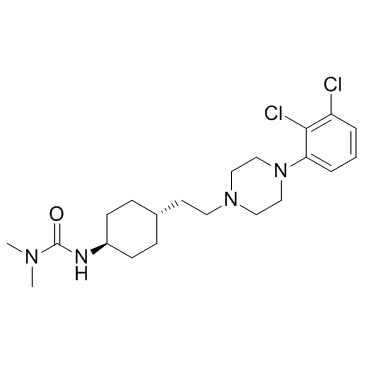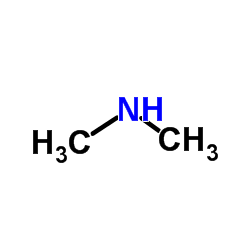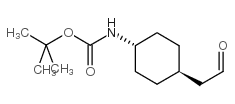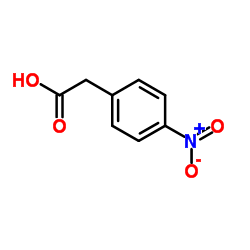Cariprazine

Cariprazine structure
|
Common Name | Cariprazine | ||
|---|---|---|---|---|
| CAS Number | 839712-12-8 | Molecular Weight | 427.411 | |
| Density | 1.2±0.1 g/cm3 | Boiling Point | 600.1±55.0 °C at 760 mmHg | |
| Molecular Formula | C21H32Cl2N4O | Melting Point | N/A | |
| MSDS | N/A | Flash Point | 316.7±31.5 °C | |
Use of CariprazineCariprazine is a novel antipsychotic drug candidate that exhibits high affinity for the D3 (Ki=0.085 nM) and D2 (Ki=0.49 nM) receptors, and moderate affinity for the 5-HT1A receptor (Ki=2.6 nM). |
| Name | 3-[4-[2-[4-(2,3-dichlorophenyl)piperazin-1-yl]ethyl]cyclohexyl]-1,1-dimethylurea |
|---|---|
| Synonym | More Synonyms |
| Description | Cariprazine is a novel antipsychotic drug candidate that exhibits high affinity for the D3 (Ki=0.085 nM) and D2 (Ki=0.49 nM) receptors, and moderate affinity for the 5-HT1A receptor (Ki=2.6 nM). |
|---|---|
| Related Catalog | |
| Target |
Ki: 0.49 nM (D2 receptor), 0.085 nM (D3 receptor), 2.6 nM (5-HT1A receptor)[1] |
| In Vitro | Cariprazine stimulates inositol phosphate (IP) formation with a high potency (pEC50 8.5) with relatively low efficacy (Emax 30%)[2]. Cariprazine, a novel candidate antipsychotic, demonstrated approximately 10-fold higher affinity for human D3 versus human D2L and human D2S receptors (pKi 10.07, 9.16, and 9.31, respectively). Cariprazine displays high affinity at human serotonin (5-HT) type 2B receptors (pKi 9.24) with pure antagonism. Cariprazine has lower affinity at human and rat hippocampal 5-HT1A receptors (pKi 8.59 and 8.34, respectively) and demonstrates low intrinsic efficacy. Cariprazine displays low affinity at human 5-HT2A receptors (pKi 7.73). Moderate or low affinity for histamine H1 and 5-HT2C receptors (pKi 7.63 and 6.87, respectively) suggest Cariprazine's reduced propensity for adverse events related to these receptors[2]. Cariprazine is over sixfold more potent (EC50=1.4 nM) than Aripiprazole (EC50=9.2 nM) in inhibiting isoproterenol-induced cAMP production in HEK-293 cells[4]. |
| In Vivo | Administration of Cariprazine (30 µg/kg) reduces the striatal uptake of both radioligands to the level of nonspecific binding compared with baseline PET measurements. Cariprazine has negligible effect on the time-activity curves in the cerebellum. At doses of 5.0 and 30 µg/kg, Cariprazine causes a dose-dependent dopamine D2/D3 receptor occupancy of ~45% and ~80% for both antagonist [11C] raclopride and agonist radioligand [11C]MNPA. Receptor occupancy of dopamine D2/D3 receptors calculated using the transient equilibrium and the MRTM2 methods ranged from 5% at the lowest dose (1.0 µg/kg) to 94% at the highest dose (300 µg/kg)[1]. The effects of 5 doses of Cariprazine (ranging from 0.005 to 0.15 mg/kg) are examined on EPM behavior of wild-type mice. Whereas lower doses of Cariprazine (0.005 to 0.02 mg/kg) do not alter the time spent in open arms, the two higher doses (0.08 and 0.15 mg/kg) lead to a significant decline of this measure (ANOVA, (F(5,52)=4.20; p=0.0032)). Moreover, the two higher doses of Cariprazine also lead to a significant decrease in the total number of arm entries (F(5,52)=7.21; p=0.0001)) but this decrease in the total number of arm entries is largely accounted for by a significant decrease in the number of closed arm entries (F(5,52)=11.75; p=0.0001)). The two highest doses of Cariprazine (0.08 and 0.15 mg/kg) have significant effects on locomotor activity, but doses ranging from 0.005 to 0.02 mg/kg do not affect anxiety-like behavior or locomotor activity in the EPM test[3]. A significant (P<0.01) reduction in ouabain-induced hyperactivity is observed after acute i.p. administration of all doses of Cariprazine (mean±SEM: 0.06 mg/kg, 64.2±3.88; 0.25 mg/kg, 72.7±11.67; 0.5 mg/kg, 40.6±5.32; 1 mg/kg, 19.5±8.78) and lithium (40.4±12.78), compared with ouabain injection alone (114.6±14.33). The highest Cariprazine dose produced significant sedation (72% inhibition for Cariprazine 1.0 mg/kg aCSF vs. saline aCSF; P<0.05)[4]. |
| Kinase Assay | These assays are done in 50 mM Tris (pH 7.4), 100 mM NaCl, 7 mM MgCl2, 1 mM EDTA, and 1 mM DTT. Assay tubes (final volume 250 μL) contain 50 μM (striatum and hippocampus) or 1 μM (D2 and D3 cell membrane) GDP, the ligand to be examined, and membrane suspension (250 μg tissue/tube for the striatum and hippocampus and 20 μg protein/tube for hD2 and hD3 membranes). Samples are preincubated for 10 min at 30°C. After the addition of 50 pM [35S]GTPγS, membranes are incubated for an additional 60 min at 30°C. Nonspecific binding is determined in the presence of 10 μM GTPγS; basal binding is determined in the presence of buffer only. The assay is terminated by rapid filtration through UniFilter GF/B using a harvester, and the membranes washed four times with 1 mL of ice-cold buffer. After drying (40°C for 1 h), 40 μL of Microscint is added to the filters, and the bound radioactivity is determined by a TopCount NXT counter[2]. |
| Cell Assay | Cells are seeded on a 24-well tissue culture plate in 500 μL of medium. Fifty microliters of medium containing 0.55 μCi myo-[3H]inositol is added (final concentration 1 μCi/mL) and incubated for 18-20 h. Cells are then washed three times with buffer containing 140 mM NaCl, 5 mM KCl, 2 mM CaCl2, 5 mM HEPES, 5 mM Na-HEPES, 20 mM glucose, and 10 mM LiCl (pH 7.4). Cells are then incubated for an additional 60 min (37°C) in medium with test compounds alone (agonist test) or alongside 1000 nM (±)-Quinpirole (antagonist test). Medium is then aspirated off, cells are lysed by adding 400 μL of 0.1 M HCl/2 mM CaCl2, and supernatants are frozen at −72°C. After thawing and centrifugation at 1000g for 10 min, 200 μL of each supernatant is loaded on 250 μL of AG1-X8 (formate form) anion exchange column. Effluent is discarded, and columns are washed twice in 1.5 mL of distilled water. IPs are eluted with 2.5 mL of 1 M ammonium formate/0.1 M formic acid directly into scintillation vials, 10 mL of Optiphase HiSafe 3 is added, and the radioactivity is determined in a TriCarb 4900 scintillation counter[2]. |
| Animal Admin | Mice[3] Experiments are performed on wild-type C57Bl/6J mice. In tests of cognitive functions, it is essential to employ concentrations of drugs that have no effects on emotional behavior and that do not impair locomotor activity. Whether Cariprazine (administered at a dose range of 0.005 to 0.15 mg/kg) is first tested affected the behavior of mice in the EPM, a test of anxiety-related behavior that is also critically dependent upon normal locomotor activity. Animals are exposed to an EPM apparatus designed for mice (leg height: 45 cm, arm length: 35 cm, lane width: 5 cm, wall height: 15 cm). Testing (under 100 lux lighting) is performed between 1 and 4 PM. Mice are placed in the center of the maze and their time spent in open arms and the number of closed and open arm entries during a 5 min test period is recorded. Measures of the time spent in open arms and the number of open arm entries served as a measure of anxiety-like behavior. The number of closed arm entries served as a measure of locomotor activity. Rats[4] Adult male Sprague-Dawley rats (150-300 g) are used. Cariprazine is dissolved in 0.9% saline and administered at 0.06, 0.25, 0.5, and 1.0 mg/kg via intraperitoneal (i.p.) injection 1 h before i.c.v. injection of ouabain and daily thereafter for 7 days. Open field activity is assessed immediately following the i.c.v. injection and again after 7 days (the activity is noted 10-14 h after the last i.p. injection of Cariprazine). |
| References |
| Density | 1.2±0.1 g/cm3 |
|---|---|
| Boiling Point | 600.1±55.0 °C at 760 mmHg |
| Molecular Formula | C21H32Cl2N4O |
| Molecular Weight | 427.411 |
| Flash Point | 316.7±31.5 °C |
| Exact Mass | 426.195313 |
| PSA | 42.31000 |
| LogP | 5.18 |
| Vapour Pressure | 0.0±1.7 mmHg at 25°C |
| Index of Refraction | 1.595 |
| Storage condition | -20°C |
|
~95% 
Cariprazine CAS#:839712-12-8 |
| Literature: WO2011/73705 A1, ; Page/Page column 10 ; |
|
~% 
Cariprazine CAS#:839712-12-8 |
| Literature: Journal of Medicinal Chemistry, , vol. 56, # 22 p. 9199 - 9221 |
|
~% 
Cariprazine CAS#:839712-12-8 |
| Literature: Journal of Medicinal Chemistry, , vol. 56, # 22 p. 9199 - 9221 |
|
~% 
Cariprazine CAS#:839712-12-8 |
| Literature: Journal of Medicinal Chemistry, , vol. 56, # 22 p. 9199 - 9221 |
|
~% 
Cariprazine CAS#:839712-12-8 |
| Literature: Journal of Medicinal Chemistry, , vol. 56, # 22 p. 9199 - 9221 |
|
~% 
Cariprazine CAS#:839712-12-8 |
| Literature: Journal of Medicinal Chemistry, , vol. 56, # 22 p. 9199 - 9221 |
| trans 4-{2-[4-(2,3-dichlorophenyl)-piperazine-1-yl]-ethyl}-N,N-dimethylcarbamoyl-cyclohexylamine |
| trans-4-{2-[4-(2,3-dichlorophenyl)-piperazin-1-yl]-ethyl}-N,N-dimethylcarbamoyl-cyclohexylamine |
| Cariprazine |
| UNII-F6RJL8B278 |
| Vraylar |
| RGH 188 |
| N'-(trans-4-{2-[4-(2,3-dichlorophenyl)piperazin-1-yl]ethyl}cyclohexyl)-N,N-dimethylurea |
| 3-(trans-4-(2-(4-(2,3-dichlorophenyl)piperazin-1-yl)ethyl)cyclohexyl)-1,1-dimethylurea |
| Cariprazine (USAN/INN) |
| Urea, N'-[trans-4-[2-[4-(2,3-dichlorophenyl)-1-piperazinyl]ethyl]cyclohexyl]-N,N-dimethyl- |
| 3-(trans-4-{2-[4-(2,3-Dichlorophenyl)-1-piperazinyl]ethyl}cyclohexyl)-1,1-dimethylurea |
| trans-1-{4-[2-[4-(2,3-dichlorophenyl)-piperazin-1-yl]-ethyl]-cyclohexyl}-3,3-dimethyl-urea |
| UNII:F6RJL8B278 |
![trans N-(4-{2-[4-(2,3-dichlorophenyl)-piperazine-1-yl]-ethyl}-cyclohexyl)carbamic acid methylester structure](https://image.chemsrc.com/caspic/489/1231947-89-9.png)

![Ethyl 2-[trans-4-[(tert-Butoxycarbonyl)amino]cyclohexyl]acetate structure](https://image.chemsrc.com/caspic/445/946598-34-1.png)




 CAS#:1083076-69-0
CAS#:1083076-69-0